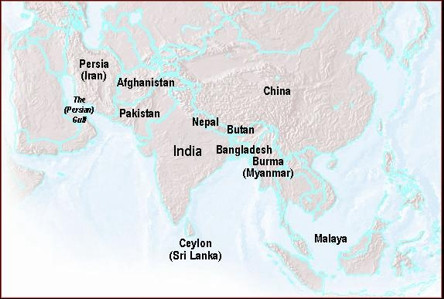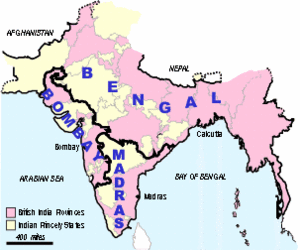Beginners' Guide
Contents
Starting out your 'British India' research
The FIBIS online Beginners' Guide will continue to be expanded in the future. It is recommended that you read through all of this information before contacting FIBIS for personal research services (Members) or research advice (non-Members). You may also find Peter Bailey's slideshow "Your First Visit to the IOR" helpful. (The slideshow takes about a minute to download with broadband). The slideshow is also available on YouTube
Scope of FIBIS' Interest
The main focus of FIBIS activities is the ‘sub-continent’ of India but we are also interested in all areas and activities of the British in South Asia including the following between the founding of the East India Company in 1599 to ‘Indian Independence’ in 1947:
Afghanistan, Aden, Andaman Islands, Bangladesh, Bencoolen (Sumatra), Burma (Myanmar), Ceylon (Sri Lanka), China, Macao & Hong Kong, Indonesia (Borneo, Labuan etc.), Malaysia, Mauritius, Persia, Singapore, Straits Settlements.
Also included are the activities of the East India Company in London and St. Helena.
Presidencies
British India was divided into three Presidencies:
- Bombay, which covered the west and north of the country, including what is now Pakistan
- Bengal, which covered the east of the country and included Burma and what is now Bangladesh and extended west to parts of what is now Pakistan, including Lahore, Multan, Peshawar and Rawalpindi
- Madras, which covered the southern portion of India
The main cities of the Presidencies were Bombay, Calcutta and Madras, respectively.
Knowing which Presidency a town or city was in, is important when consulting many of the India Office Records held at the British Library.
Also note that administrative boundaries changed from time to time and it is important to check 'border' districts in the adjoining area. The above map is adapted from Plate 21 of the (1931) revised atlas of the Imperial Gazetteer of India. Such small scale maps cannot show every enclave of territory, and this map is not to be taken as an authority for boundaries. For more detail see the provincial maps in the Imperial Gazetteer atlas, and large scale published Survey of India topographical maps.
Main sources for information
- Mailing lists
- British Library – Asian & African Studies Reading Room – APAC (Asia, Pacific and Africa Collections)
- The National Archives (TNA) – formerly the Public Records Office (PRO)
- General Register Office (GRO)
- National Army Museum (NAM)
- National Maritime Museum (NMM)

